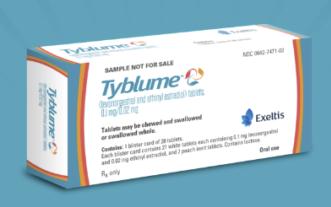Tyblume Interactions
There are 501 drugs known to interact with Tyblume (ethinyl estradiol / levonorgestrel), along with 22 disease interactions, and 9 alcohol/food interactions. Of the total drug interactions, 77 are major, 374 are moderate, and 50 are minor.
- View all 501 medications that may interact with Tyblume
- View Tyblume alcohol/food interactions (9)
- View Tyblume disease interactions (22)
Most frequently checked interactions
View interaction reports for Tyblume (ethinyl estradiol / levonorgestrel) and the medicines listed below.
- acyclovir
- amlodipine
- azathioprine
- azithromycin
- bupropion
- buspirone
- Centrum Adults (multivitamin with minerals)
- cetirizine
- cyclosporine ophthalmic
- dipyridamole
- duloxetine
- eletriptan
- hydroxychloroquine
- hydroxyzine
- Levothyrox (levothyroxine)
- Lexapro (escitalopram)
- metformin
- montelukast
- naltrexone
- Nurtec ODT (rimegepant)
- omeprazole
- Ozempic (semaglutide)
- pantoprazole
- propranolol
- sildenafil
- spironolactone
- sumatriptan
- trazodone
- Tylenol (acetaminophen)
- Vyvanse (lisdexamfetamine)
Tyblume alcohol/food interactions
There are 9 alcohol/food interactions with Tyblume (ethinyl estradiol / levonorgestrel).
Tyblume disease interactions
There are 22 disease interactions with Tyblume (ethinyl estradiol / levonorgestrel) which include:
- smoking
- abnormal genital bleeding
- abnormal vaginal bleeding
- carcinomas (estrogenic)
- hypercalcemia in breast cancer
- hypertension
- thromboembolism/cardiovascular
- hepatic neoplasms
- breast malignancy
- liver disease
- angioedema
- gallbladder disease
- hyperlipidemia
- liver disease
- melasma
- depression
- fluid retention
- glucose intolerance
- thyroid function tests
- cardiovascular disease
- hyperlipidemia
- weight gain
More about Tyblume (ethinyl estradiol / levonorgestrel)
- Compare alternatives
- Reviews (1)
- Drug images
- Side effects
- Dosage information
- During pregnancy
- Drug class: contraceptives
Related treatment guides
Drug Interaction Classification
| Highly clinically significant. Avoid combinations; the risk of the interaction outweighs the benefit. | |
| Moderately clinically significant. Usually avoid combinations; use it only under special circumstances. | |
| Minimally clinically significant. Minimize risk; assess risk and consider an alternative drug, take steps to circumvent the interaction risk and/or institute a monitoring plan. | |
| No interaction information available. |
See also:
Further information
Always consult your healthcare provider to ensure the information displayed on this page applies to your personal circumstances.


